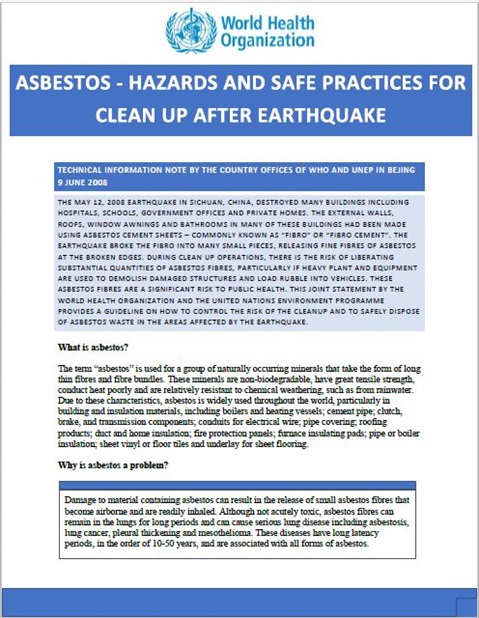Asbestos - hazards and safe practices for clean up after earthquake
TECHNICAL INFORMATION NOTE BY THE COUNTRY OFFICES OF WHO AND UNEP IN BEJING , 9 JUNE 2008

Overview
The May 12, 2008 earthquake in Sichuan, China, destroyed many buildings including hospitals, schools, government offices and private homes. The external walls, roofs, window awnings and bathrooms in many of these buildings had been made using asbestos cement sheets – commonly known as “fibro” or “fibro cement”. The earthquake broke the fibro into many small pieces, releasing fine fibres of asbestos at the broken edges. During clean-up operations, there is the risk of liberating substantial quantities of asbestos fibres, particularly if heavy plant and equipment are used to demolish damaged structures and load rubble into vehicles. These asbestos fibres are a significant risk to public health.
A joint statement by the World Health Organization and the United Nations Environment Programme provided guidance on how to control the risk of the clean-up and to safely dispose of asbestos waste in the areas affected by the earthquake.
This guidance may be applicable to other situations where buildings containing asbestos materials have been damaged by an earthquake.
